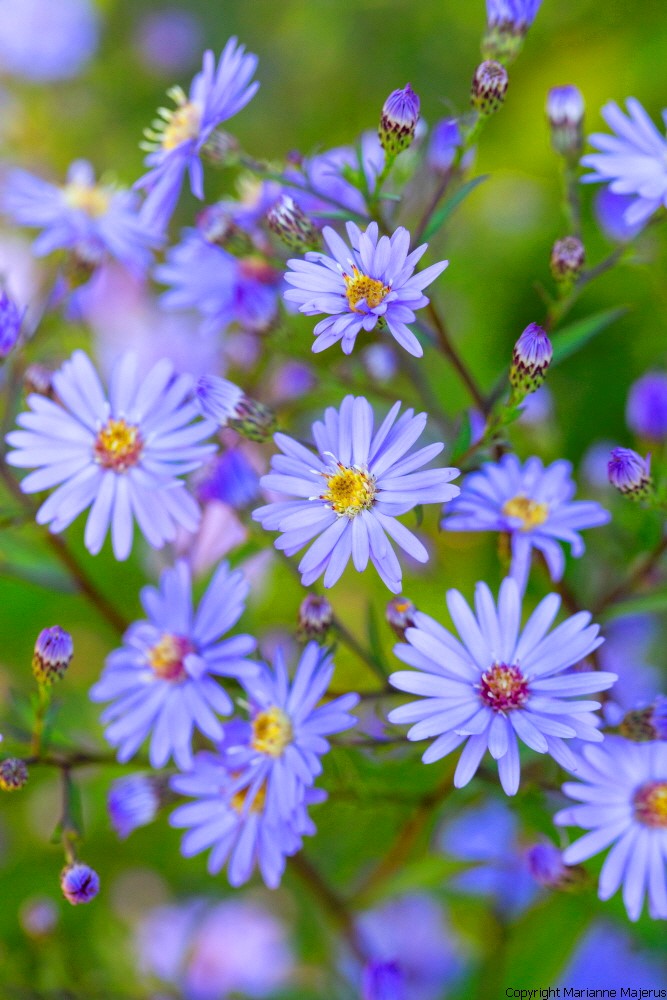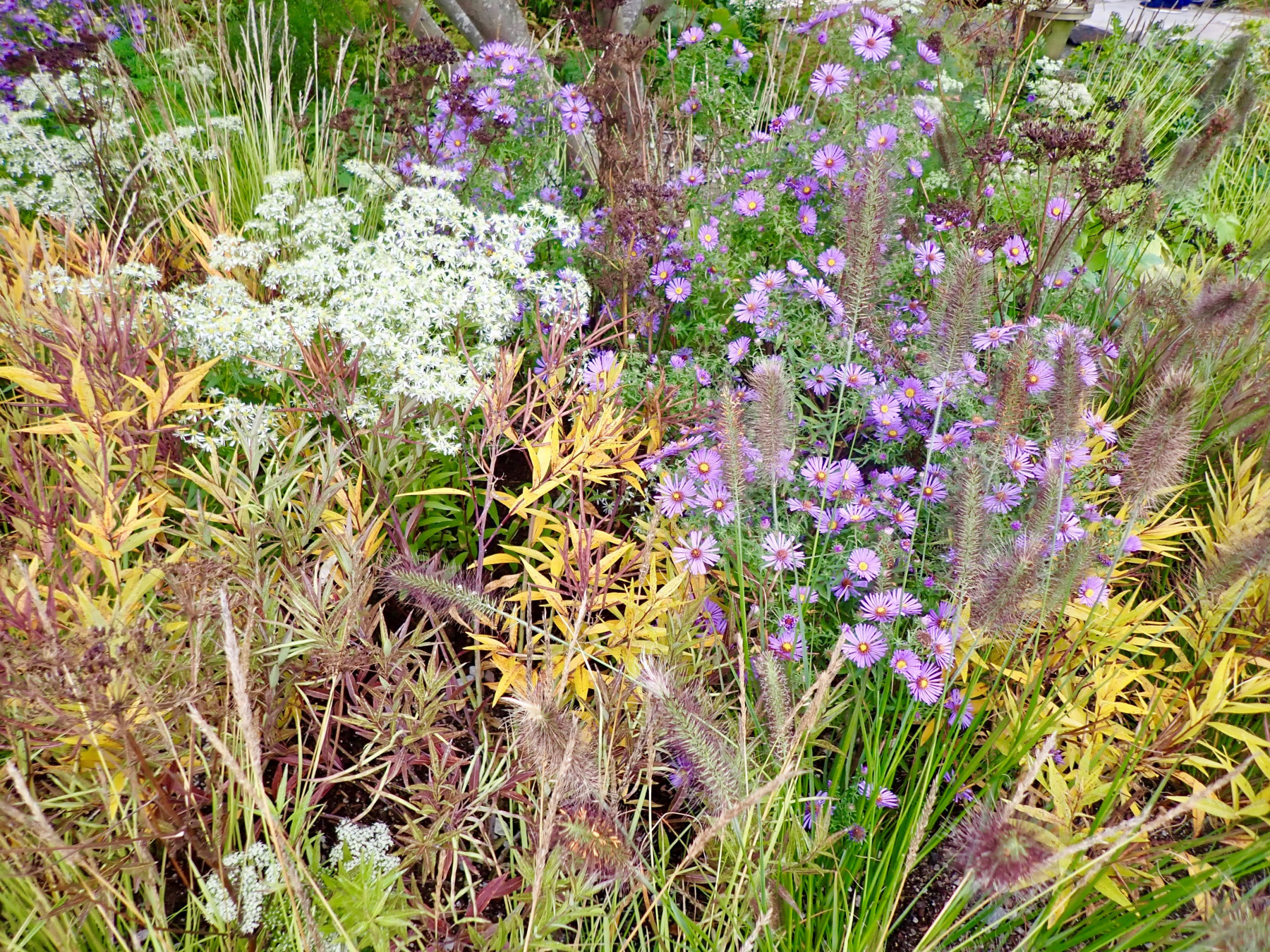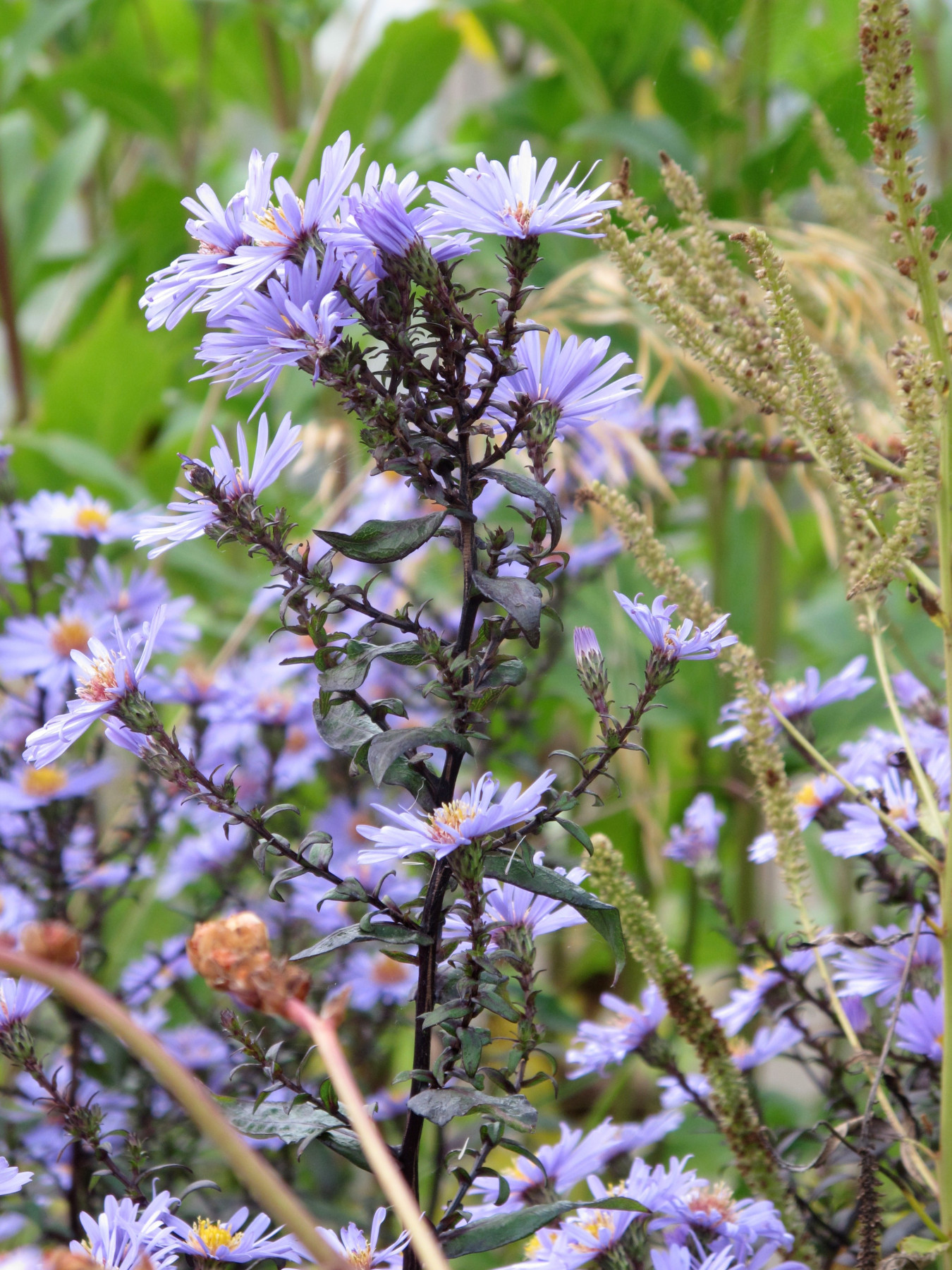I’m not keen on plant names being changed generally, because it can be very confusing. I never look at cimificfugas, tall autumn bottlebrushes with divided rich-burgundy foliage, and think of them as being remotely the same as rather boring, berried woodland acteas. The fact that a botanist has peered into their DNA and found it to be almost the same doesn’t help the gardener. They’re distinctly different and, without DNA evidence, they would have stayed distinctly different in name I think!

However, I do approve of asters (or Michaelmas daisies) being shuffled into different genera, because they’re such a mixed bunch. DNA analysis, carried out in the mid-1990s indicated that asters were a mixture of species from all over the world and many weren’t closely related at all. Julian Shaw, writing in The Plantsman (June 21014), announced that the changes would be recorded in the RHS Plantfinder of 2015. The change makes good gardening sense.
European asters, principally the Italian aster or Aster amellus, A. thomsonii, A. x frikartii and A. pyrenaeus, are drought-tolerant and they flower in August, so they are very useful in British gardens, which are becoming more and more drought-stressed as the climate changes. They stay as asters. The award for the longest-flowering aster must go to Aster x frikartii ‘Mönch’, a 1918 hybrid produced by a Swiss breeder named Karl Ludwig Frikart. He used two species as parents. One was the blue-flowered Italian aster or Aster amellus, native to central and south-eastern Europe. The other was a pink-flowered, short Himalayan species named Thompson’s aster or Aster thomsonii. These species are both native to mountainous areas, so prone to dying away in wet British winters.
He wasn’t the first person to make this cross. The Rev. Charles Wolley-Dod (1826 -1904), a clergyman and plantsman of note, exhibited some seedlings to the Royal Horticultural Society in 1892, but nothing came from them. Frikart’s hybrids, on the other hand, became a great success because they had hybrid vigour. Three are still with us today, the widely available Mönch’, and the less so ‘Eiger’ and ‘Wunder von Stäfa’. The large lavender-blue daisies of all three begin in July and go on into October.
Alan Bloom attempted the same cross in 1964, but had to use A. thomsonii ‘Nanus’ instead, because the straight A. thomsonii was no longer available. His more-compact pink ‘Flora’s Delight’ is well worth seeking out though. All reach roughly up to 3ft (90cm) and they can be grown in any sunny border in good soil. Frikart’s hybrid asters have a slightly floppy habit, although they don’t need staking, and this gives them a natural look. The dark-green foliage looks handsome by early summer and does not brown in autumn. “Flora’s Delight’ is more compact and stiffer stemmed.

The Italian aster, Aster amellus, is a looker with finely lashed flowers in a stronger colour. Two are very worthy. ‘Veilchenkönigin’ (‘Violet Queen’) AGM has deep-violet flowers with darker middles and leafy stems which seems to flower on and on, due to being sterile. ‘Rosa Erfüllung’ (‘Pink Zenith’) has pink flowers. Both were raised by German nurseryman Karl Foerster in the 1950s and both will only reach under two feet (40 – 50 cm).
North American asters have been shuffled off intoi various groups. Aster divaricate, now Eurybia divaricata, is a usefully floppy aster that I curl round box balls. The dark divaricate stems are topped by tiny white daisies which open in August and turn into mauve thistledown by autumn. The cascading stems of tiny flowers make this a useful plant. A. x herveyi ‘Twilight’, now Eurybia x herveyi ‘Twilight’ produces a haze of soft-blue, simply shaped flowers. These were both sprinkled through M&G Chelsea Show Sarden of Chelsea September 2021, beautifully designed by Charlotte Harris and Hugo Bugg.
Most of the asters we tend to grow are now known as Symphyotrichum and this genus contains North American species, with one exception – the Eurasian S. ciliatum. Symphyotrichums and generally autumn-flowering and quite demanding on the water front and, as British gardens get hotter and often drier, these become less easy to grow. They used to be September flowering, but stay in bud for longer now that the weather is drier.
The New England asters, Symphyotrichum novae-angliae, are tall, stiff-stemmed and relatively undemanding with pink, white or purple flowers that are adored by butterflies. These September-flowering clump formers don’t need regular division and they don’t run around. Their biggest drawback is their shabby lower leaves, but the solution is simple. Bury them in a border so that you only see the upper third.
Good New England asters include the recent ‘Helen Picton’, a strong purple named after the 3rd generation of the Picton family who are aster icons based at Old Court Nurseries in Colwall, near Malvern. ‘Barr’s Violet’, an old variety, has neat, long-lashed slender purple ray florets surrounding a golden middle. ‘Andenken an Alma Pötschke’ is a strident, raspberry-pink that really stands out from the crowd, although the ray petals curl and twist about a bit. ‘Harrington’s Pink’ has lots of soft-pink ray petals and greyer green foliage. ‘Septemberrubin’ (syn. ‘September Ruby’) has purple-red flowers and all are roughly four feet high, 120cm.
New York asters, now named Symphiotyichum novi-belgii, are highly bred and very demanding when it comes to water. However, there are far more varieties of New York Aster (once named A. novi-belgii), principally because English plant breeders like Ernest Ballard of Colwall in Worcestershire (1870-1952) raised hundreds. The New York Aster (perhaps a natural hybrid between S. leave and S. dumosus) is found in swamps and marshy ground. Relegated to an English garden in August, the inevitable water stress produces mildew and all novi-belgii asters suffer.

However, their more-double form and vibrant colours attract gardeners, and I grow several including the deep-blue ‘Sailor Boy’. The double-flowered lavender-blue ‘Marie Ballard’ looks wonderful for a year or two, but I’ve lost her countless times because New York asters are hard work!
Good performers in my garden include ‘Little Carlow’ which is like a bruning bush full of small blue stars that glow in evening light. Another great favourite is now Doellingeria umbellate, previously A. umbellatus. Grey leaves cling round the stem and, in September, small daisies create butterfly heaven. At RHS Wisley they grow it close to the copper-red saucers of Hesperantha coccinia ‘Major’.
I noticed another at Chelsea this year, Kalimeris incisa ‘Charlotte’, commonly known as the Japanese aster. I’m on a hunt for it! Two others ramble through the border. The first Symphyotrichum ‘Vasterival’ bears wiry dark stems and lots of small lilac flowers and it pops up everywhere. The second invader, Symphyiotrichum leave ‘Calliope’ has thick black stems, very vertical and shiny, with equally sultry foliage. The lilac-blue flowers appear in October, lifting the autumn border, and every year I think I should cull it – but don’t.











